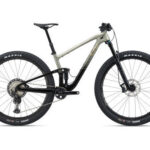The world of vintage bicycles holds fascinating tales, and among them are the stories of Antique Raleigh Bikes crafted for export markets. These models, often subtly different from their UK counterparts, offer a unique glimpse into Raleigh’s global strategy and the specific needs of diverse regions. Examining these bikes reveals intriguing details about cost-effective adaptations and design choices tailored for robustness and varying terrains.
Decoding the Export Decals and Nottingham Heritage
While proudly bearing the “Nottingham Made” headbadge, a hallmark of Raleigh’s UK production, these export models often sported distinctive decal sets. Unlike the Heron motifs prevalent on UK models or the Rampar “R” logos for US/Canada markets, export bikes frequently featured unique transfers on the seat tube and fork blades, signaling their intended destination beyond domestic borders. This subtle branding variation highlights Raleigh’s awareness of diverse markets and their efforts to cater to a global clientele.
Practical Design for Varied Terrains
One of the defining characteristics of these antique Raleigh export bikes is their emphasis on practicality and durability. The inclusion of robust 26-inch tires, in contrast to the typical 28-inch wheels on UK 3-speed models, speaks volumes about their intended use. Paired with a single-speed freewheel hub, this configuration prioritized resilience on rough roads and unpaved surfaces common in developing nations. This design choice reflects a deliberate adaptation to environments where simplicity and sturdiness were paramount.
Cost-Conscious Components: The Wrights Saddle
Further evidence of market-specific tailoring can be seen in component selection. The Wrights saddle, for instance, while a product of the same Tube Investments group as Brooks, represents a cost-saving measure. Utilizing leather that didn’t meet Brooks’ stringent standards allowed for a more economical alternative without sacrificing core functionality. This pragmatic approach ensured affordability in price-sensitive export markets.
A Global Footprint Beyond Malta
It’s important to note that while specific examples might surface in regions like Malta, these export models were not exclusive to a single market. Raleigh’s global reach extended to numerous developing nations, and these bikes were likely offered across a wide spectrum of countries. The presence of Curacao Trading Corporation stickers on similar vintage Rudges underscores Raleigh’s active engagement in export markets during the late 1970s, demonstrating their efforts to maintain a global presence even amidst shifting economic landscapes.
In conclusion, antique Raleigh export bikes are more than just vintage bicycles; they are artifacts that narrate Raleigh’s strategic approach to international markets. By understanding their unique features – from export-specific decals to robust, cost-considered components – we gain a richer appreciation for the global history of this iconic bicycle brand and its adaptability to diverse needs worldwide.


